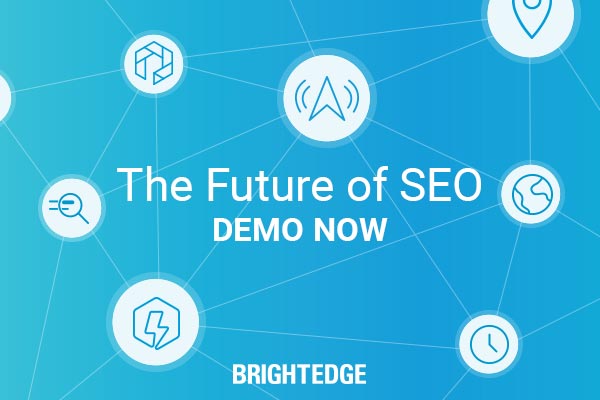 Search marketing continues to change at a rapid pace, leaving many marketers feeling intimidated and unsure about where to begin. Technology and customers are becoming increasingly sophisticated and brands must adopt new strategies to keep up.
Search marketing continues to change at a rapid pace, leaving many marketers feeling intimidated and unsure about where to begin. Technology and customers are becoming increasingly sophisticated and brands must adopt new strategies to keep up.
At Share15, we explored the future of search marketing. We dove into the trends and our presenters provided incredible insights about how to face the future. Our presenters covered subjects related to hot topics such as mobile, understanding the ever-changing algorithm and data learning.
Mobile Friendly
With each passing year, mobile devices have only grown in importance for customers, and Google’s 2015 mobile update cemented their role in search. People use their smartphones and tablets to access the Internet, research products and make purchases. Our own research here at BrightEdge found that by Q3 of 2014, the size of purchases made on mobile devices was within 10 percent of those made on desktops. Customers are not shying away from making purchases of all sizes on-the-go. Brands need to be able to keep up with these customers, who want websites that are fully accessible on their mobile devices. It is not enough to just make the website fit on the screen.
A mobile-friendly site takes into account common behaviors of mobile customers and is optimized to meet those needs. For example, people who are on-the-go are not likely to be too interested in reading multiple articles on the main page. Instead, they want to have easy access to your contact information or a click-to-call button. The site should be prioritized to reflect mobile behavior. We had the pleasure of hearing from Sean Kainec of The Home Depot, Denis Scott of OpenTable and Dave Lloyd of Adobe during this presentation. All three represent major brands that understand the demands of mobile. Their talks offered all attendees an incredible amount of insight. Here were some of the highlights:
- instead of thinking about mobile as a device, think of it as a lifestyle - focus on the person
- mobile is about fulfilling a customer’s need when they are in the moment
- focus on cooperation between the mobile team and the SEO team
- do not automatically go to responsive design - many retail brands find that other designs work better
- remember when measuring progress that behavior and intent can be different on mobile
- develop apps that are keyword optimized and have local translations for targeted regions
Beyond the Algorithm
Google’s algorithm updates that have focused on rewarding relevancy and quality as well as the mobile update have made it clear that the user experience is the highest priority for the search engine giant. When you build your content with the end-goal of a positive customer experience, you will naturally develop the same priorities as the search engines themselves. This will give you the ability to get beyond the algorithm so that you can see progress in your SERP goals without as much worrying about the next algorithm update.
Optimizing for the user means going beyond outstanding content. It also requires making sure that the site structure is developed to provide the optimal user experience. Reviewing case studies and best practices can be incredible resources for those learning how to maximize their potential in this area. At Share15, we heard from brilliant minds, experienced in the art of optimizing for the end user. Jacqueline Urick of Sears PartsDirect, Binti Pawa of Time Inc, Adam Audette of Merkle RKG and Dawna Olsen of Epicor each added some great insights that helped our attendees feel empowered to see beyond the algorithm. Here were some of the main points the highlighted during the conference:
- there are two key pillars of SEO, technical and the audience
- technical SEO is critical for performance
- Google can read JavaScript, which includes redirects, and can render dynamic content
- it is important to create reports before and after each stage of a content migration to monitor performance
- use keyword research to optimize content organization
- always do a thorough audit after a content migration launch to make sure everything is working as expected
- expect surprises after a migration and fix problems immediately
- regularly run a crawl budget to answer key questions like how easily strategically important pages are accessed by bots
Data Learning and Decision Making
Personalization has become increasingly critical in a successful marketing strategy. Customers want to see brands that recognize their needs as individuals and respond appropriately. The amount of data available for marketers, however, is beyond what people can compute. According to the IDC, by 2020 there will be an estimated 44 trillion gigabytes of data, but the human mind is only capable of holding a million gigabytes of memory (source: American Scientist). Humans cannot keep up with the amount of data being produced alone - we will need the help of machines. This does not mean replacing humans with machines.
Machines will not be able to produce the creative elements of human marketing. What machines will be able to do is help humans interpret the data so that they can maximize their opportunities with their visitors. Data learning and decision making can help websites track customers’ visits to the site and display the most relevant information. It can also interpret information about the visitor’s personal situation, such as location and weather, to further personalize the page. The data can help you create a personalized journey for each visitor from the first time they land on the website through their purchase and into the post-purchase period. This will help you exceed customer expectations and create loyal brand customers. This topic was explored by Jay King of Ben & Jerry’s, Sudhir Sharma of Motovo and Stefan Zechner of Western Union. Each of the talks provided some great points about the ideas at hand. Here were some of the highlights that our attendees appreciated:
- make sure that SEO is employed as a cross-departmental effort
- have a strong monitoring process in place to gauge progress
- we have the data we need at hand, we just learn to leverage it to identify what customers are looking for - which is where tools like the BrightEdge Data Cube come into play
- listening to customers can provide valuable insights into the types of campaigns and content that would be appreciated
- gather data through a variety of sources such as social listening and A/B testing
Search marketing continues to evolve quickly and savvy marketers are seizing hold of the technology and techniques that will be the way of the future. By touching upon hot topics such as mobile, the algorithm and data learning, our Share15 presenters did a fantastic job of making sure our attendees were prepared for whatever the future might bring.


